| Title | Space-time ICA versus Ensemble ICA for ictal EEG analysis with component differentiation via Lempel-Ziv complexity. |
| Publication Type | Journal Article |
| Year of Publication | 2007 |
| Authors | James, CJ, Abásolo, D, Gupta, D |
| Journal | Conf Proc IEEE Eng Med Biol Soc |
| Volume | 08/2007 |
| Pagination | 5473-6 |
| Date Published | 2007 |
| ISSN | 1557-170X |
| Keywords | Algorithms, Artificial Intelligence, Diagnosis, Computer-Assisted, Electroencephalography, Epilepsy, Humans, Pattern Recognition, Automated, Principal Component Analysis, Reproducibility of Results, Sensitivity and Specificity |
| Abstract | In this proof-of-principle study we analyzed intracranial electroencephalogram recordings in patients with intractable focal epilepsy. We contrast two implementations of Independent Component Analysis (ICA) - Ensemble (or spatial) ICA (E-ICA) and Space-Time ICA (ST-ICA) in separating out the ictal components underlying the measurements. In each case we assess the outputs of the ICA algorithms by means of a non-linear method known as the Lempel-Ziv (LZ) complexity. LZ complexity quantifies the complexity of a time series and is well suited to the analysis of non-stationary biomedical signals of short length. Our results show that for small numbers of intracranial recordings, standard E-ICA results in marginal improvements in the separation as measured by the LZ complexity changes. ST-ICA using just 2 recording channels both near and far from the epileptic focus result in more distinct ictal components--although at this stage there is a subjective element to the separation process for ST-ICA. Our results are promising showing that it is possible to extract meaningful information from just 2 recording electrodes through ST-ICA, even if they are not directly over the seizure focus. This work is being further expanded for seizure onset analysis. |
| URL | http://www.ncbi.nlm.nih.gov/pubmed/18003250 |
| DOI | 10.1109/IEMBS.2007.4353584 |
| Alternate Journal | Conf Proc IEEE Eng Med Biol Soc |
| PubMed ID | 18003250 |
Space-time ICA versus Ensemble ICA for ictal EEG analysis with component differentiation via Lempel-Ziv complexity.
Downloadable:

